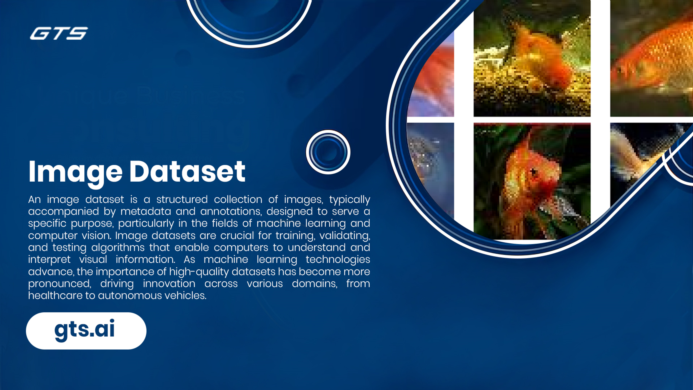
blog address: https://gts.ai/services/image-dataset-collection/
blog details: In the realm of artificial intelligence (AI) and machine learning, image datasets play a pivotal role in training and testing models that drive innovations across industries. From autonomous vehicles to medical diagnostics, the power of machine learning is often directly tied to the quality and quantity of the data fed into algorithms, and image datasets form the foundation for many visual AI applications.
What is an Image Dataset?
An image dataset is a curated collection of images used for training and evaluating machine learning models. These datasets consist of thousands to millions of images, each annotated with labels that describe the content of the image. For example, an image dataset used for facial recognition might contain photos of various individuals, with each image labeled according to the person’s identity.
These datasets are crucial for supervised learning, a type of machine learning where models learn to make predictions based on labeled examples. By processing large volumes of annotated images, AI models can learn to recognize patterns and make accurate classifications or predictions.
Common Image Datasets
Several large-scale image datasets have become benchmarks for the AI community:
ImageNet: One of the largest and most widely used image datasets, containing over 14 million images across 20,000 categories. It’s often used for object detection and classification tasks.
CIFAR-10 and CIFAR-100: These datasets consist of smaller images (32x32 pixels), with 10 and 100 classes, respectively. CIFAR datasets are popular for benchmarking deep learning algorithms.
COCO (Common Objects in Context): This dataset contains over 330,000 images and provides rich contextual information. It’s widely used for object detection, segmentation, and captioning tasks.
MNIST: A dataset of handwritten digits (0-9) that is widely used for introductory training of image recognition systems.
LFW (Labeled Faces in the Wild): Specifically designed for facial recognition, this dataset contains over 13,000 labeled images of faces from different individuals in real-world settings.
Applications of Image Datasets
Image datasets are applied in a broad range of industries. Here are some notable areas where they are indispensable:
Autonomous Vehicles: Image datasets are used to train models to detect objects like pedestrians, vehicles, and traffic signs, allowing self-driving cars to navigate safely.
Healthcare: In medical imaging, datasets of X-rays, MRIs, or CT scans are used to train models for detecting diseases, from cancer to neurological disorders.
Retail and E-commerce: Image datasets enable recommendation engines that suggest products based on visual similarity or customer preferences.
Agriculture: AI models trained on agricultural datasets can monitor crop health, detect diseases, and even identify pests using satellite or drone imagery.
Security: Face recognition systems are trained on extensive facial image datasets to enhance security at airports, in public spaces, and on personal devices.
Challenges in Image Datasets
While image datasets have revolutionized AI, they also present several challenges:
Bias: If an image dataset contains unbalanced data, such as over-representing a particular group or environment, it can lead to biased models that perform poorly on underrepresented classes.
Data Labeling: Manually labeling image datasets can be a labor-intensive and time-consuming task, especially for large-scale datasets. Some advanced AI models now use semi-supervised or unsupervised learning to reduce reliance on labeled data.
Size and Complexity: Processing and storing large image datasets requires significant computational resources. As datasets grow in size and complexity, the need for efficient storage and faster training methods increases.
Privacy Concerns: Many image datasets involve human subjects, raising concerns over privacy. Ensuring that datasets comply with privacy regulations, such as GDPR, is critical for maintaining ethical AI development.
The Future of Image Datasets
As AI continues to evolve, image datasets will remain a key ingredient in the development of more sophisticated and accurate models. However, we are also seeing a shift towards creating synthetic datasets, where AI-generated images are used to supplement real-world data. This can help mitigate issues related to data bias, privacy, and the difficulty of obtaining high-quality labeled images.
In addition, self-supervised learning techniques, which do not require large labeled datasets, are on the rise. These approaches allow models to learn directly from the data, potentially reducing the need for extensive human labeling.
Conclusion
Image datasets are an essential resource for building the next generation of AI systems. As the demand for AI-driven solutions grows, the development and maintenance of diverse, high-quality datasets will be crucial for ensuring the accuracy, fairness, and scalability of these technologies. Whether you're a researcher, developer, or data scientist, understanding and working with image datasets is key to unlocking the full potential of machine learning and AI.
keywords: Image dataset
member since: Sep 19, 2024 | Viewed: 7


